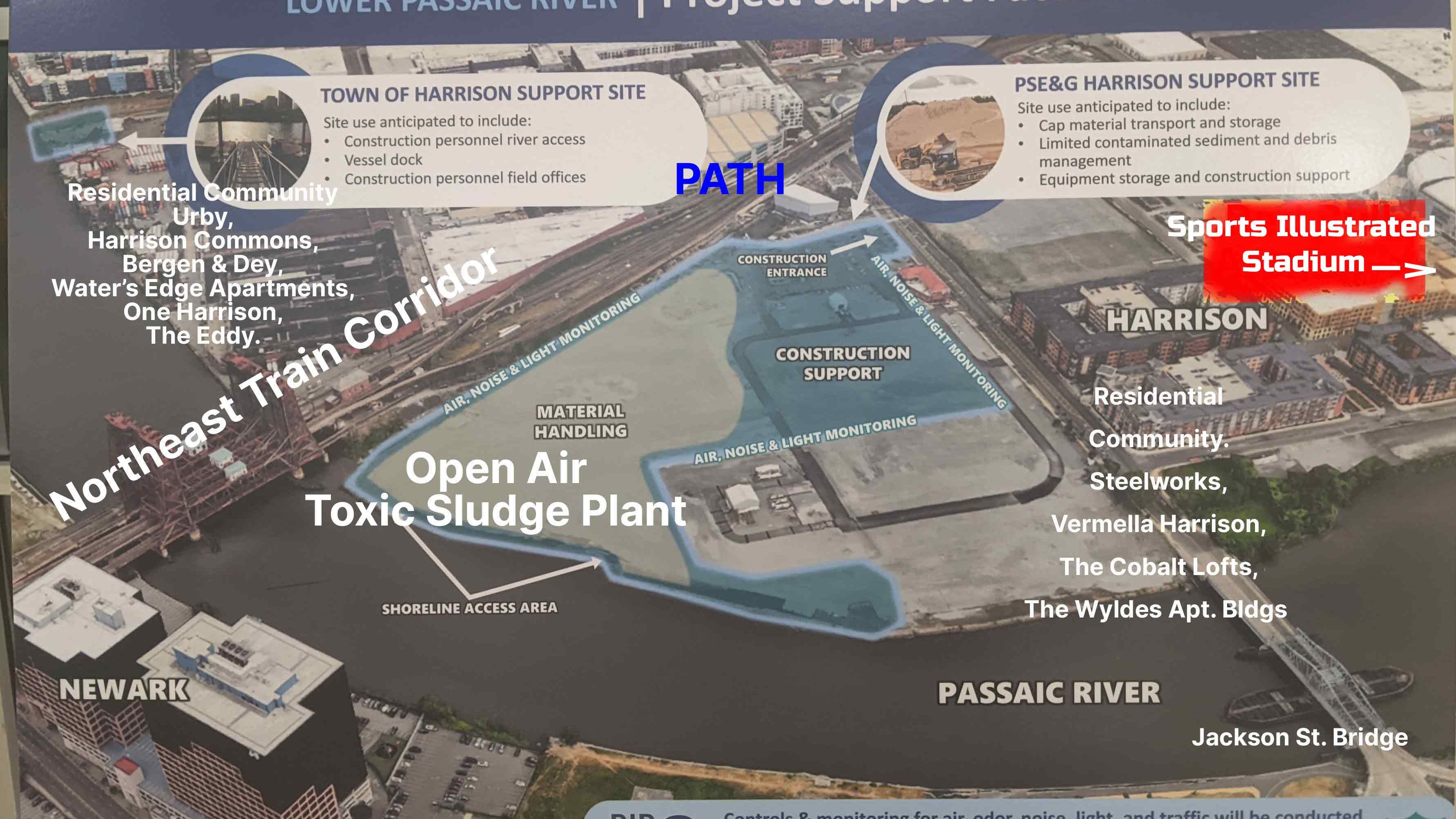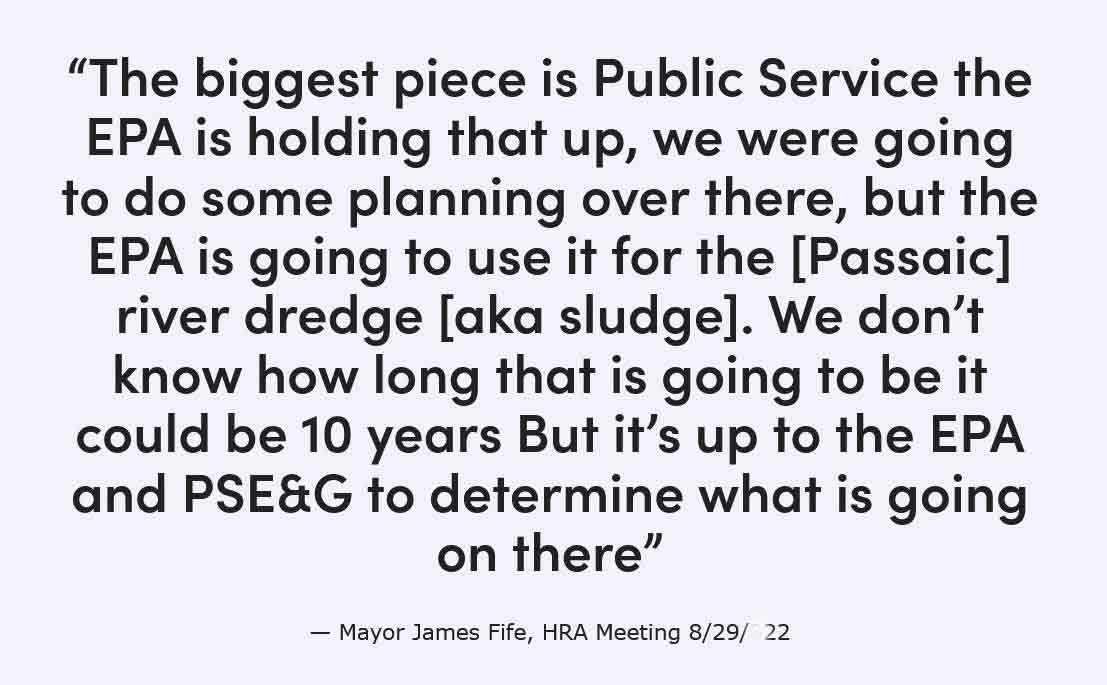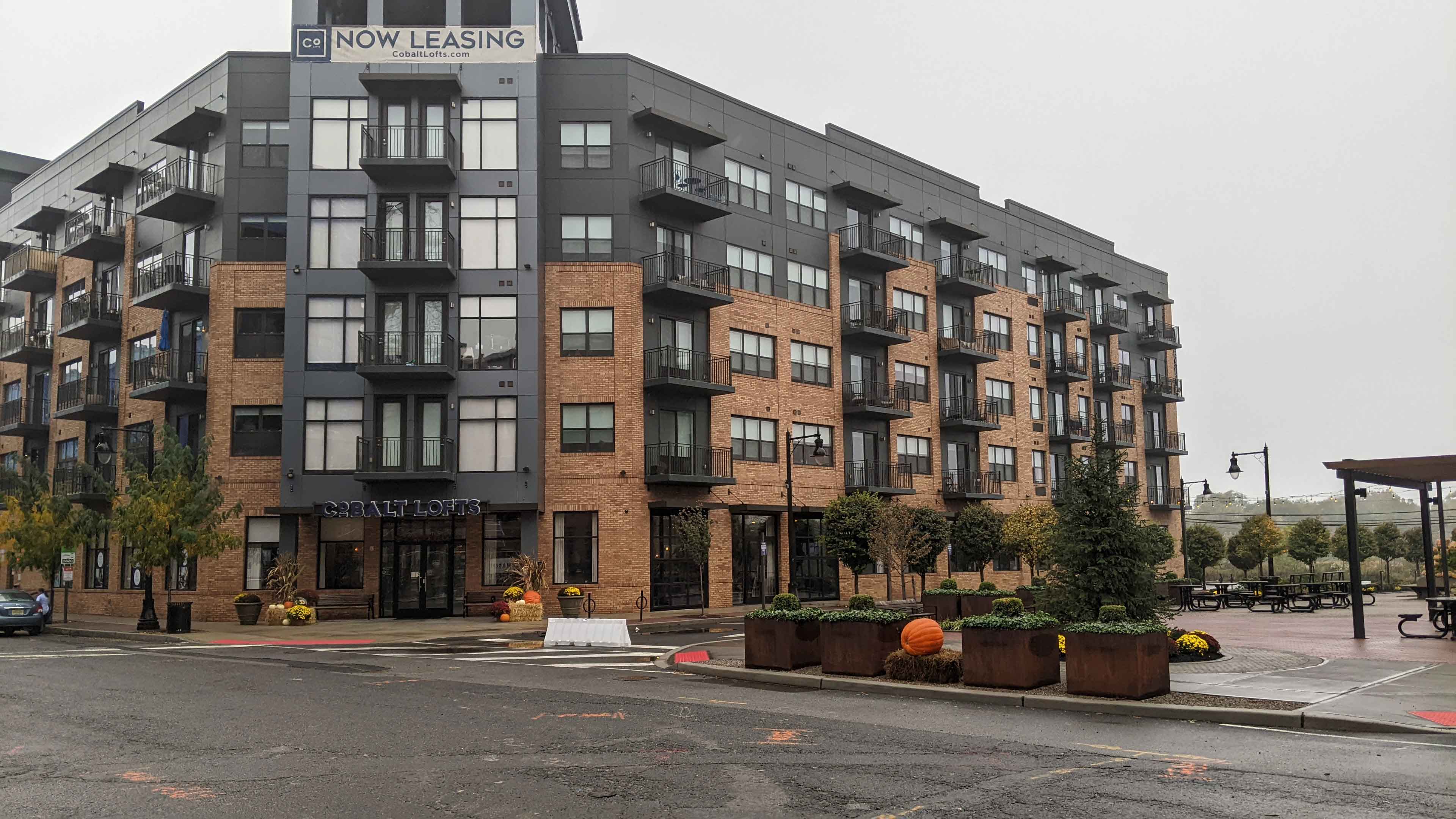EPA’s Nov. 17 ’25 CAG Meeting Was Zoom Only, Impacted Participation
Nov 19, 2025
The Environmental Protection Agency (EPA) held its scheduled Community Advisory Group (CAG) meeting on Monday, November 17, 2025, but not in the manner federal law requires. Although the meeting had been planned as an in-person session in the Ironbound section of Newark—ground zero for decades of Passaic River contamination—EPA canceled the in-person portion days earlier, citing the “uncertainty” of a potential federal government shutdown.
By the time the meeting actually took place, the federal government had already reopened, rendering EPA’s justification obsolete. Yet the agency refused to reinstate the in-person component, opting instead for a Zoom-only session that barred the public from turning on cameras or microphones. Participants were restricted to submitting questions via the Chat function, which moderators selectively chose from—leaving many residents’ concerns unaddressed.
For a meeting required under federal Superfund law to ensure public participation, the format amounted to a near-complete shutdown of public dialogue.
A Federal Law Meant for Transparency, Undermined
Community Advisory Groups exist because Congress mandated that communities affected by Superfund cleanups must play a central role in oversight and decision-making. “CAG” stands for Community Advisory Group, a body intended to give residents, local organizations, and municipal governments a meaningful voice in projects that affect human health and environmental justice.
The late U.S. Senator Frank R. Lautenberg, who spent his career fighting for environmental protections and chemical safety, would likely have found EPA’s approach deeply troubling.
Lautenberg championed community involvement as a non-negotiable requirement, arguing that residents of impacted communities—especially working-class and minority neighborhoods like the Ironbound and Harrison’s Riverbend District—deserved real access, real answers, and genuine transparency.
In Superfund law debates, Lautenberg repeatedly emphasized that public participation is not optional. He understood that government agencies and corporations historically made environmental decisions behind closed doors, often at the expense of vulnerable communities. His legislative efforts focused on correcting this imbalance by mandating open meetings, in-person access, and two-way communication.
The EPA’s November 17 meeting disregarded that legacy and violated the spirit—if not the letter—of those requirements.
Zoom Chat Is Not Public Participation
EPA’s insistence on running the meeting entirely through text-based chat left many residents frustrated and unheard. The failures of this approach were illustrated publicly on the Harrison NJ Resident Forum Facebook group, where Harrison resident Steve Landfield posted a detailed account of how the agency’s restricted format marginalized the very people most threatened by the Passaic River cleanup plan.
Landfield, who lives directly adjacent to the PSE&G property in Harrison, where EPA proposes to build a toxic sludge dewatering facility, wrote:
“I found the CAG meeting most dissatisfying… We have no representation on the CAG, despite being the ones MOST affected by this plan, and when I have asked questions in the chat, they are ignored, because they are not the agenda of the CAG.”
He went on to detail his professional background,16 years as an environmental health and safety instructor, and his alarm at EPA’s refusal to address legitimate health and safety concerns directly.
With no ability to speak aloud, follow-up unanswered questions, or engage in real dialogue, residents like Landfield were effectively silenced.
Harrison Residents Left Without a Voice and Without Representation
Landfield’s post also raised another glaring issue: not one resident from Harrison’s Riverbend District sits on the CAG, despite hundreds—if not thousands—of residents living in four large luxury apartment buildings directly across the street from the proposed toxic sludge plant.
Yet Harrison’s elected officials, including Mayor James Fife, continue to support the EPA plan even after years of denying its existence of EPA’s Plan to bring Toxic Dioxin Sludge On Land in Harrison, Landfield noted:
“I am appalled that my Harrison Mayor and Council lied to us and have done nothing to inform us or protect us from this threat… they have exposed thousands… to one of the most deadly toxins known.”
The EPA meeting, which should have been an opportunity for those most affected to obtain answers, instead showcased a system where the public is allowed to type—but not speak, ask—but not challenge, and attend—but not participate.
A Meeting Meant for Transparency Became a Barrier Instead
EPA’s November 17 meeting was supposed to be part of ongoing engagement around the Passaic River cleanup and the planned Harrison Sludge Dewatering facility—a facility intended to process sediment contaminated with dioxin, the toxic chemical at the heart of the notorious Agent Orange.
But by canceling the in-person meeting even after the shutdown ended, and forcing residents into an almost one-way Zoom chat box, EPA contradicted the very principles of environmental justice, public participation, and community protection upon which the Superfund program was built.
Senator Lautenberg fought for these public rights so that communities like Newark’s Ironbound and Harrison’s would never again be ignored. On November 17, 2025, those rights were diminished—not by congressional action, but by administrative convenience.
Residents of Harrison, Newark, and neighboring communities deserve better. They deserve real answers, real representation, and real access—not a muted Zoom link with a blinking chat cursor
Why Mayor Fife and Council Back the Toxic Sludge Plant — and Why It Matters
What makes the support from Mayor Fife and the Harrison Town Council all the more disquieting is that the proposed facility would sit directly across the street from modern, high-end residential buildings — including a group “luxury apartment” towers that spurred Harrison’s recent transformation. The property in question, once owned by PSE&G, had been cleaned up at the reported cost of $367 to $400 million and earmarked for a green space, community center, parking turnaround, and PATH station drop-off area.
Instead, those plans are being quietly replaced with something far more hazardous: a toxic sludge dewatering facility — a plant that will handle sediment dredged from the stretch of the Passaic River along the PSE&G property line, laden with dioxin, a by-product of the former Agent Orange–related contamination, and NAPL, an oily substance that is also toxic.

Mayor Fife has known about this plan for at least two years. At a video recorded Redevelopment Agency (HRA) meeting on August 29, 2022 being held over Zoom, he acknowledged that EPA intended to use the PSE&G parcel for the river “dredge” or sludge operation. Yet, when confronted during a subsequent Mayor & Council session in September 2022, he, along with Councilman James Doran, attempted to walk back or deny that statement — even while they knew audio/video of the Harrison Redevelopment Zone prior meeting existed.
So: why would a sitting mayor, also the long-time chairman of the Harrison Redevelopment Agency (HRA), support such a plan — one that undermines the very redevelopment goals he is supposed to champion?
What This Betrays — The Residents’ Rights & the Redevelopment Vision

The Cobalt Lofts Harrison NJ
The decision by Mayor Fife and the Council to support the toxic sludge plant represents a stark betrayal of the development and environmental justice goals many in Harrison believed in. The PSE&G parcel was supposed to be a cherry on the cake, one of the crown jewels of Harrison’s rebirth — a green space, community center, and a drop-off / Turnaround area at the PATH Station that tied in with the new apartment developments and enhanced livability. Instead, the plan appears to be reverting Harrison to its industrial past — and worse, placing residents’ health and safety at risk in the name of convenience and expediency. A cost savings for the EPA.
Moreover, by refusing to publicly oppose the proposal — and by failing to meaningfully communicate with residents and frankly Lying to Residents & Stakeholders — the Fife Administration has undercut the trust and transparency essential to a functioning democracy. As one local editorial observed, "transparency is not a forte of Mayor Fife’s administration."
In effect, the toxic sludge plan threatens to unravel over 26 years of redevelopment work — reversing decades of progress, undermining public health, and putting a financial motivation above the well-being of the community.
A Call: Why Harrison Must Demand Better
Given everything laid bare — the known toxicity of dioxin-laden sludge, the proximity of the proposed plant to residential buildings, the years-long awareness of the plan by municipal leaders, and the near-total lack of transparency — residents of Harrison must demand better. They must insist that Mayor Fife and the Town Council do what they were elected to do: protect public health, honor redevelopment promises, and uphold public trust.
If Harrison’s leadership lied to the Public. Mayor Fife & Councilman Doran are making closed-door deals exchanging community safety and environmental justice — they have betrayed not just the town’s past, but the future its residents deserve. It’s time that resident express their opposition to this ill-conceived idea and go forward with the vision of the late Mayor Raymond McDonough and allow Mayor McDonough’s vision to come to fruition.
This article aims to raise awareness and encourage public engagement, while highlighting the pressing concerns surrounding the EPA’s plans. Let me know what you think about EPA’s Plan for Harrison and the Mayor & Council’s “support of EPA’s plan” in our Community Discussion Section.
If you haven’t signed up yet, it’s free—be part of the discussion today!

